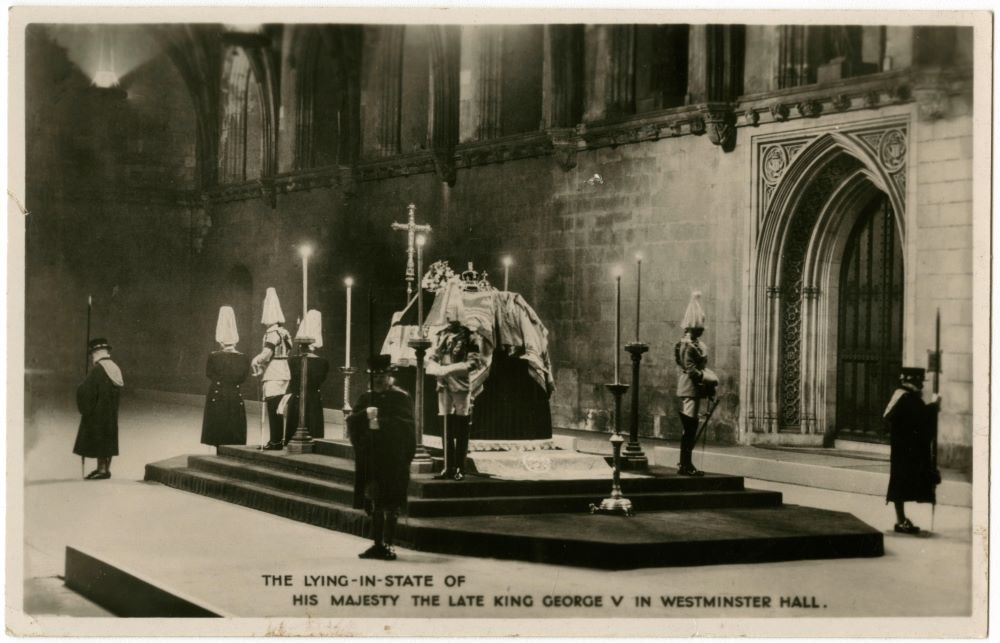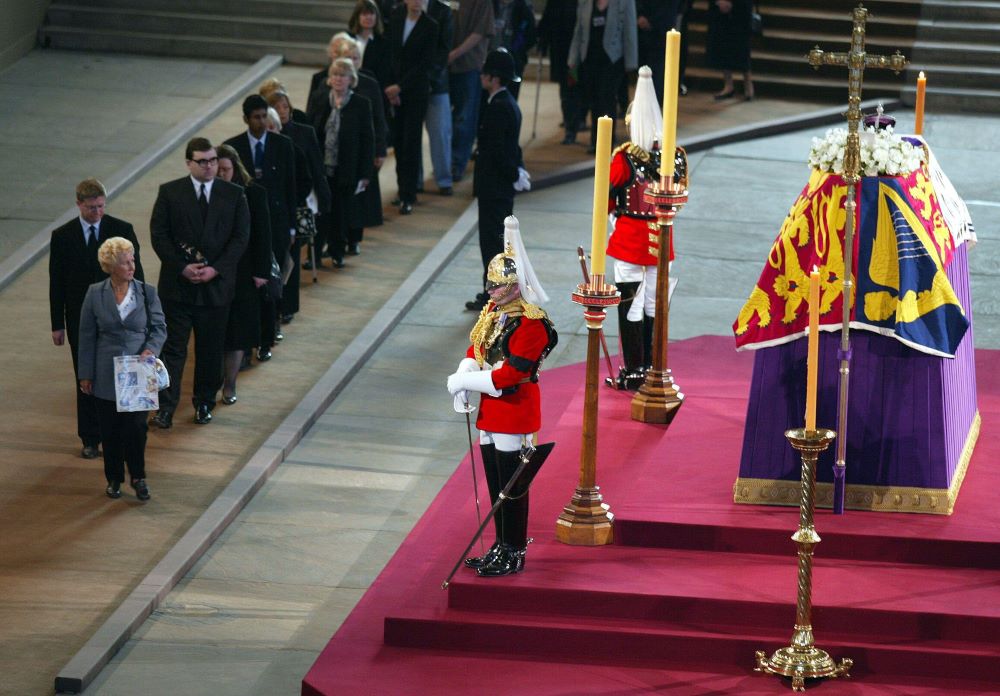Here's How The Queen's Lying-In-State At Westminster Hall Will Work
The coffin of Queen Elizabeth II it arrives at Holyroodhouse, Edinburgh (Alamy)
4 min read
This week hundreds of thousands of people are expected to form a long queue around the streets of London to see the coffin of Queen Elizabeth II, who died on Thursday, lying in state at Westminster Hall in Parliament.
A Lying-in-State is a rare event that has only taken place seven times since the first Lying-in-State 1898. The last time it took place was following the death of the Queen Mother in 2002, and prior to that after Winston Churchill died in 1965.
It is also a huge logistical operation, with thousands of police officers and soldiers set to be involved in managing the five-day occasion in central London.
It will start at 5pm on Wednesday (14 September) and end at 6:30am on Monday (19 September), prior to the Queen's funeral taking place at nearby Westminster Abbey later on Monday.
Here's how it will work.
What is a Lying-in-State?
A Lying-in-State is when the coffin containing a king, queen, the king's consort (spouse or companion) or exceptional person is dispayed in Parliament's Westminster Hall before their funeral, allowing members of the public to visit the coffin to pay their respects.
The coffin is displayed on a raised platform, known as a catafalque, and guarded throughout.
People will be able to file passed the Queen's coffin for 24 hours a day between Wednesday and Monday.
When has it happened before?
William Ewart Gladstone was the first person to receive a Lying-in-State when he died in 1898.
Since then, three kings (George V, George VI and King Edward VII) have been given a Lying-in-State in Westminster Hall as well as the George V wife, Queen Mary in 1953 and the Queen Mother in 2002.

Just one non-Royal has received a lying in state since Gladstone.
That took place in 1965 when over 300,000 people lined up around Westminster to pay their respects to the wartime prime minister Sir Winston Churchill.
Last month, parliamentary historian Mark Collins told a PoliticsHome podcast episode about Westminster Hall that only "exceptional commoners" were given a Lying-in-State.
When the Duke of Edinburgh died in 2021, he did not receive a Lying-in-State, although the possibility of such an event would have been complicated Covid restrictions that were still in place at the time.
What will it be like?
Ministers expect over 750,000 people to line up around Westminster to see the coffin of Queen Elizabeth II, with the queue potentially reaching five miles, according to The Times.
This would comfortably be the largest number of people to ever visit a Lying-in-State. An estimated 200,000 people filed past the Queen Mother's coffin in 2002.
The government has advised those planning to visit that they'll likely queue for many hours and possibly overnight, and that they should plan accordingly before making the trip to Westminster.
Members of the public will be let into Westminster Hall on a first come, first served basis. Attendees should expect airport-style security checks, with only small bags permitted.
They will be allowed to consume food and drink in the queue but they will not be allowed to take it into Westminster Hall. There will be portable toilets and water stations, as well as other facilities.
The full government guidance for attendees is here.
 "As far back as Tower Bridge"
"As far back as Tower Bridge"
Lieutenant General Leakey, who was involved in planning for this historic moment in his former role as Black Rod, last week said that the queue to get into Westminster Hall would go all the way to Tower Bridge, and that volunteers would be on hand to look after those waiting in line.
"The queue for the public to pay their respects to the Queen in the Palace of Westminster will be extremely long. It will stretch from as far back as Tower Bridge all along the South Bank, across Lambeth Bridge, into Victoria Gardens, and then into Westminster," Leakey told Talk TV.
He added that the entrance to the Palace of Westminster would involve "multi-lane security" like you'd see at "a football match" or other major event involving huge crowds.
The government is expected to confirm the details of the queuing route on Tuesday.
What happens once it's finished?
Once the five-day period has ended on Monday morning, the coffin of Queen Elizabeth II will be taken across the road to Westminster Abbey where her state funeral will take place that day.
World leaders including US President Joe Biden are expected to fly to London to attend the funeral, which will be broadcasted worldwide.
The day of the funeral (Monday, 19 September) is also a Bank Holiday.
